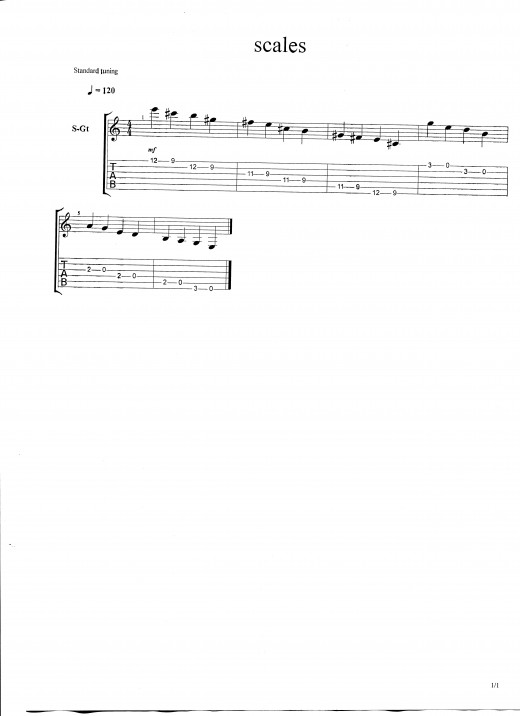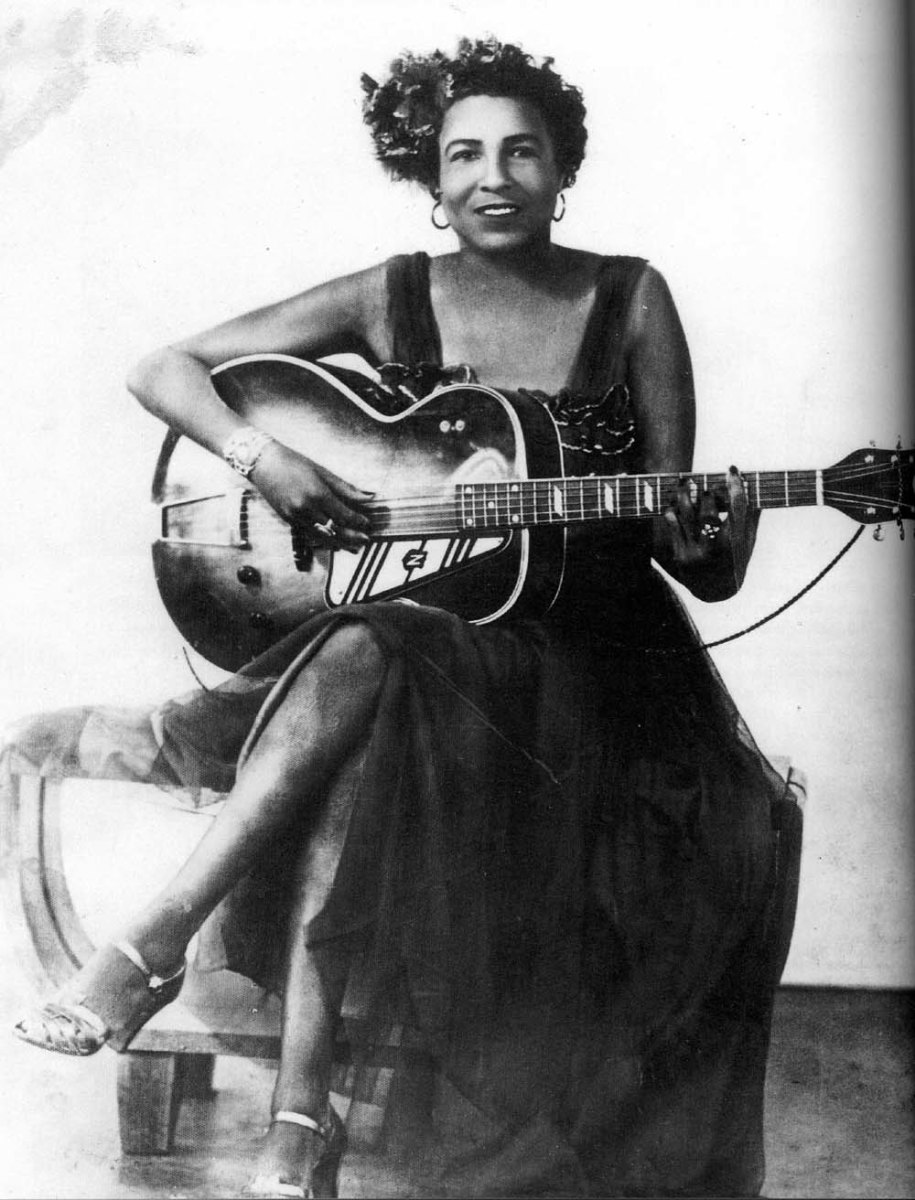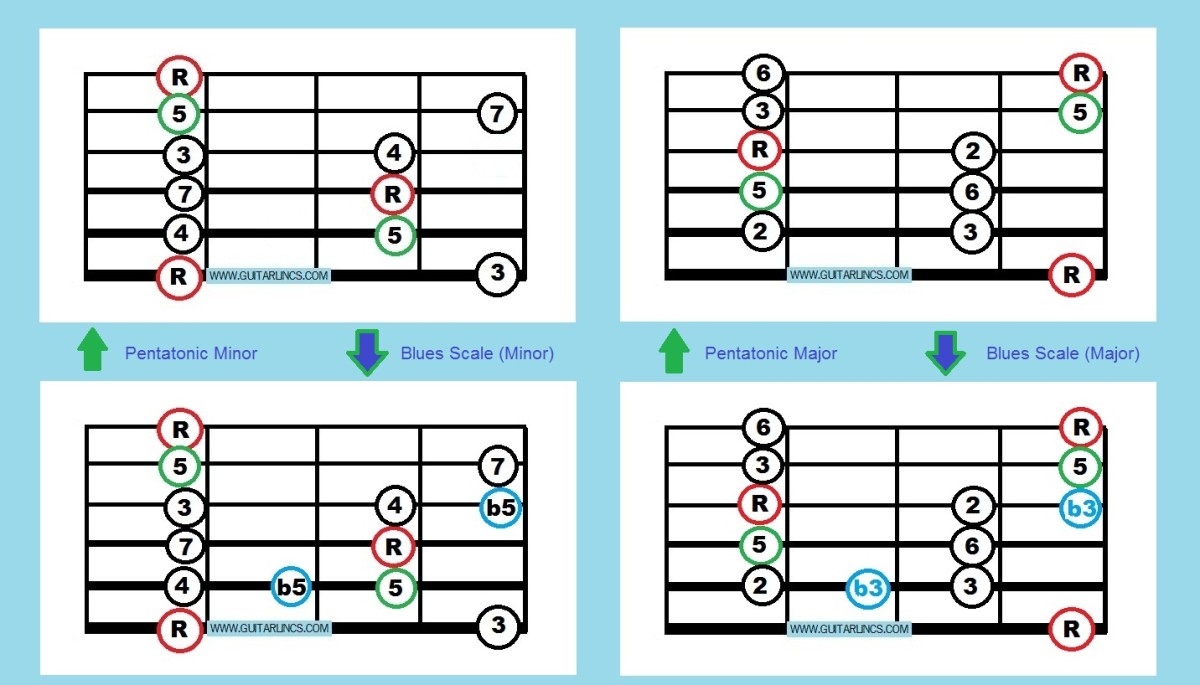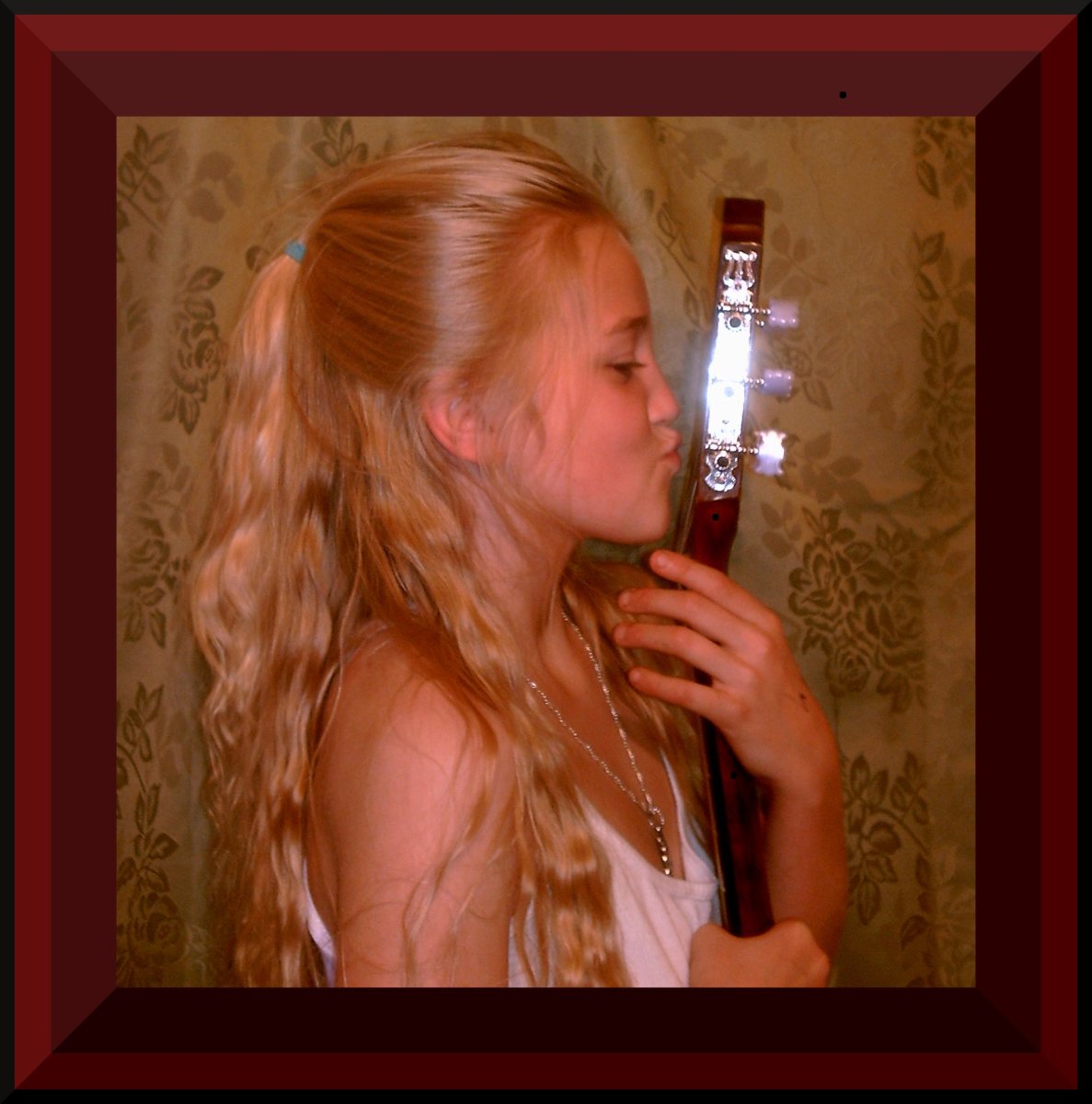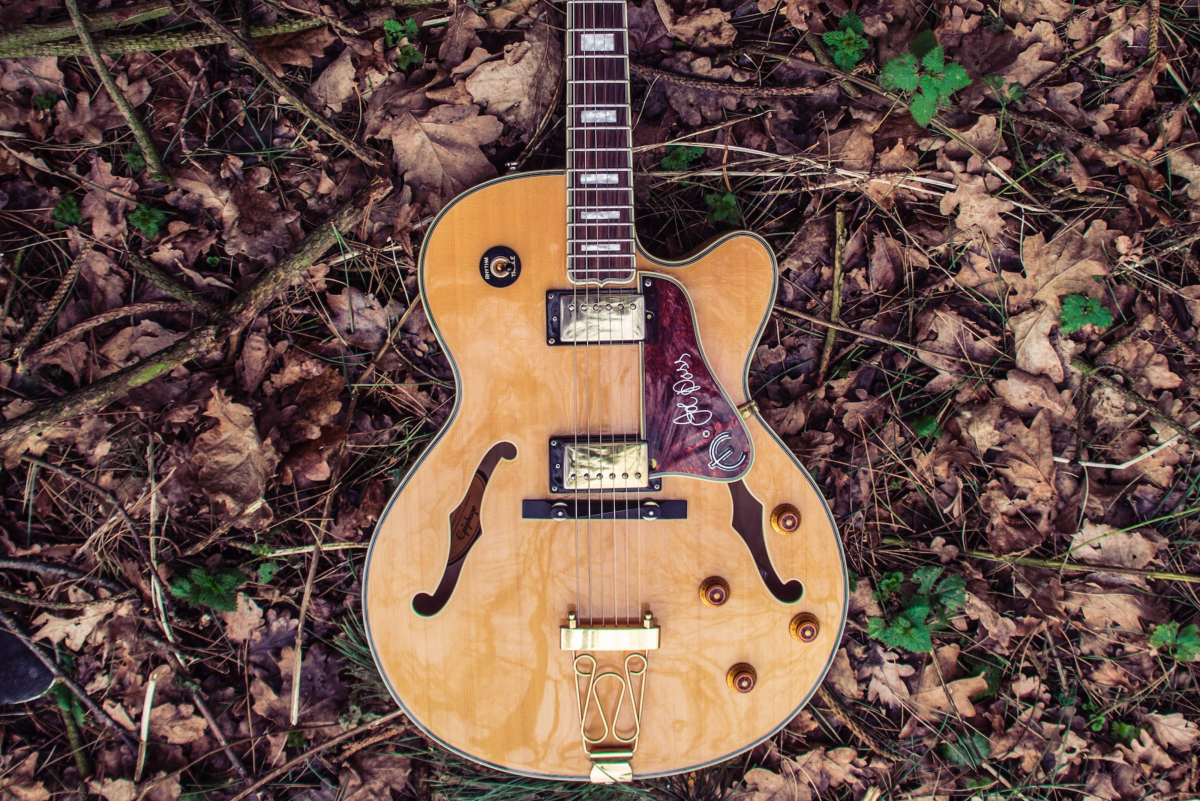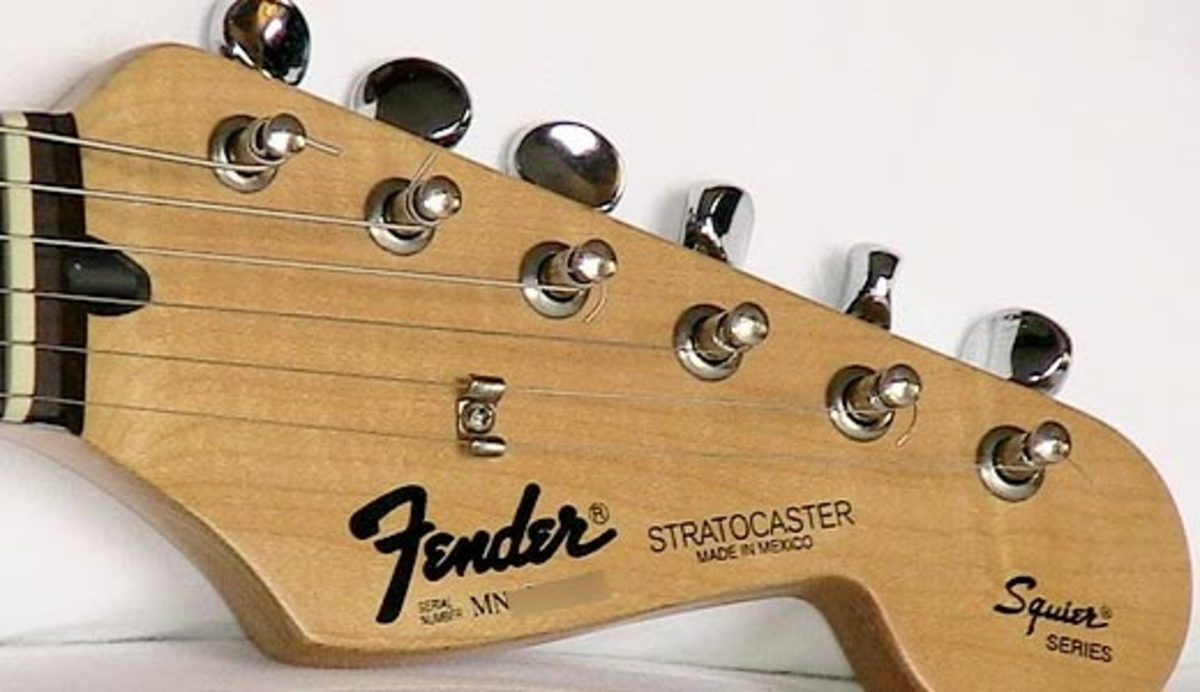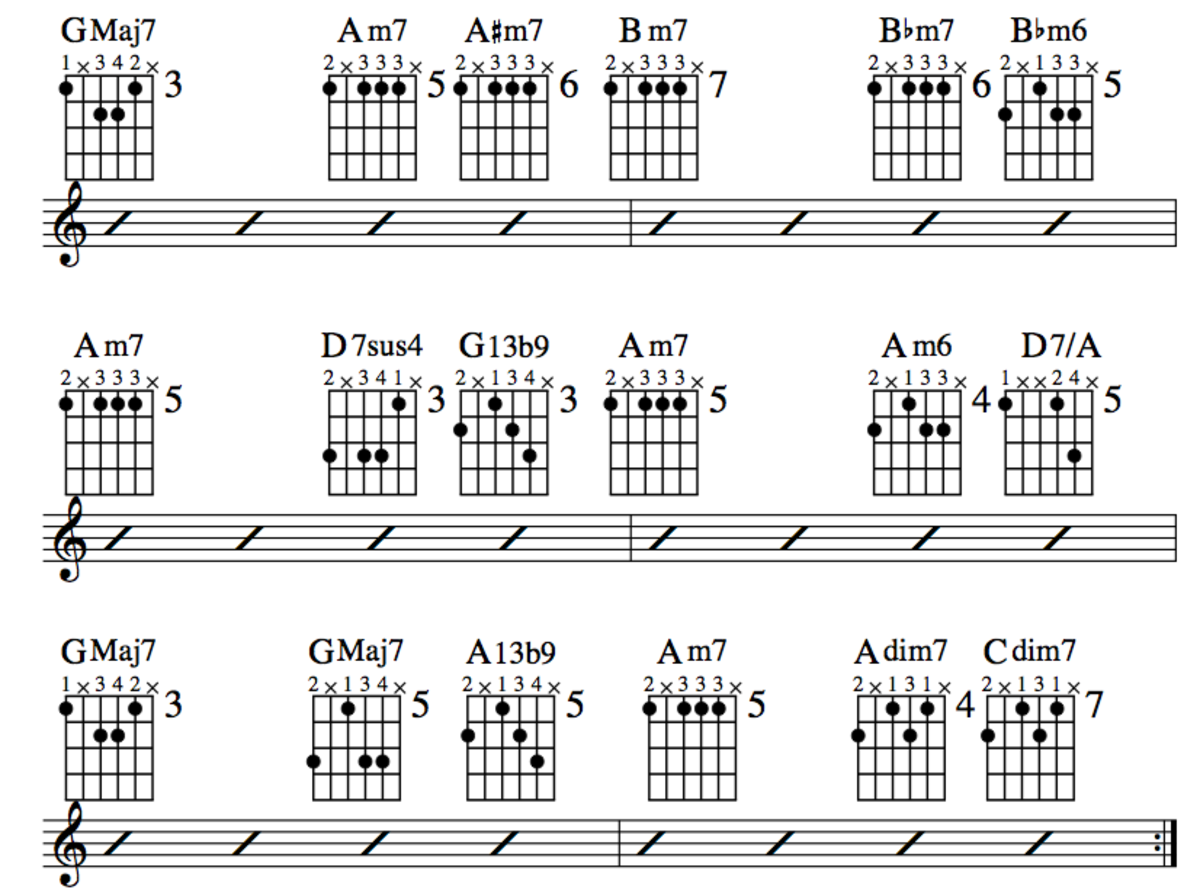Guitar - Rock N' Roll
Reading tab
This is an example of a typical rock n 'roll bass line, the kind of line played by Paul McCartney in the early days of The Beatles, when much of the group's material was derived from Chuck Berry and other rhythm and blues masters. Although it's a bass part, which could be played equally well on bass guitar, it's a very useful thing for guitar players to learn, especially as this kind of riff sounds great when doubled by guitar and bass. As the bass guitar has the same tuning as the lower strings on guitar, ( E A D G ) you can transfer any parts from one instrument to the other without much problem.
Guitar Tab - if you don't understand tab, my other hubs might help. Basically, each string of the guitar has a line, with the lowest and thickest string on the bottom, and the thinnest string on top. Then the numbers tell you which fret to play in.
My other hub Guitar Chords - Blues expands on the content of this hub.
Rock and roll bassline
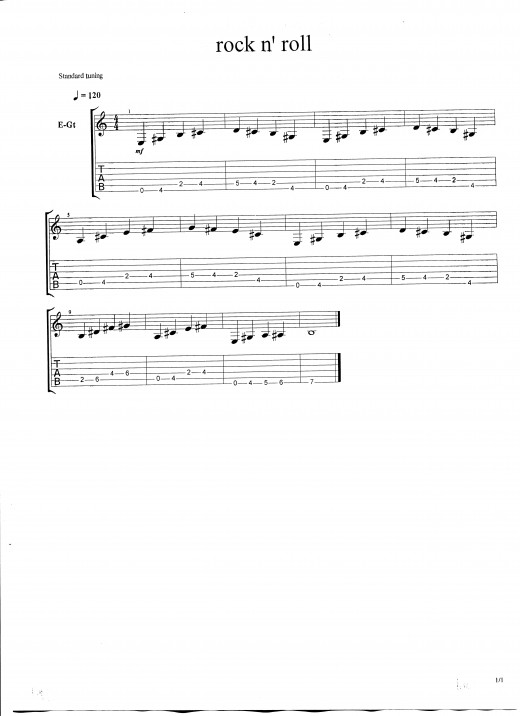
Learning the riffs
Always look for patterns when you are learning riffs - in this case, the first riff repeats, and then follows exactly the same pattern, but across to the next string, which is string 5. Next, back to the first riff, starting on string 6 again. This is almost invariably the pattern you use in a 12- Bar Blues, and you'll find it in hundreds of songs - a good example is Day Tripper by The Beatles. It's such a common device, and you'll also find it in songs like Sunshine of Your Love by Cream that are influenced by the Blues.
12 - Bar Blues
The format of this piece is 12-Bar Blues, which just uses three chords - E7, A7 and B7. Every bar has four beats, 1, 2, 3, 4 etc.
The 12- Bar blues is an essential thing to understand if you play rock, blues, funk or jazz guitar. The usual sequence is
4 bars of E7
2 Bars of A7
2 Bars of E7
then B7, A7, E7, B7 - all one bar each.
The Em pentatonic scale is a good place to start for improvising lead guitar parts.
Techniques
Palm muting can help a lot with this style of playing - rest the edge of your hand on the strings near the bridge,which should give you a muffled sound. Don't press down too hard. As you are now limiting the movement of the string, it's easier to hit it with accuracy.
Using tab is also useful for learning how to read normal music notation, which is tedious. By comparing the two versions of the same melody line, one in tab and one in normal notation, you can start to see how notation works, and also recognise where the note names fall on the guitar fretboard.
Scales
Use the E7 blues scale for this, or E pentatonic. Using both scales will sound more interesting, especially if you change scales when the chords change. The first scale shown is E pentatonic. The second scale is Em pentatonic, the same pattern but starting three frets higher, or at the lower end of the neck, as shown here. You can also add a B flat note to this scale to make it into a blues scale - that would be fret 3 on string 3, the G string.
Pentatonic scales - E and Em
